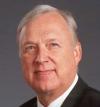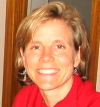Survey DesignTwo forms of the single instrument were used in the Peters ETI Religious Crisis Survey: a paper survey circulated primarily at the Graduate Theological Union in Berkeley, California, and an email survey, using SurveyMonkey.com on the web as a tool for distribution and tabulation of results. Both surveys asked the same questions, but an early version of the paper version did not yet have the question directed at non-religious participants (#5 in the final draft). 90 of the respondents completed this version. The final version had a set of ten questions, two of which identified the survey respondents, eight were statements for the respondent to assess. As mentioned, we benefitted from a previous model, the Alexander UFO Religious Crisis Survey. We pursued a similar agenda but with more elaborate and nuanced detail. The Peters survey attempts to confirm or disconfirm Alexander’s key question: “Official confirmation of the discovery of an advanced, technologically superior extraterrestrial civilization would have severe negative effects on the country’s moral, social, and religious foundations.” Our variant subdivides this question into three parts, allowing the respondent to express how confirmation would affect their personal beliefs (Question 3); the beliefs of their own religious tradition (Question 4) and the beliefs belonging to other world religions (Question 5). Whereas the Alexander instrument distinguished only three religious categories (Protestants, Catholics, and Jews), the Peters instrument distinguished persons self-identifying with 11 different groups:
Crossing our threshold of 35 or more respondents were Protestants: mainline; Protestants: evangelical; Orthodox Christian; Mormon; Jewish; Buddhist; Other; and Non-Religious. The samples of those identifying with Hinduism and Islam were too small, in our judgment, to incorporate into our numerical analysis. Yet, we did pay attention to the comments made by individuals in these categories. Within the “Other” category some respondents volunteered to identify themselves as unaffiliated theist, mystic, Swedenborgian, Jehovah’s Witness, and one a combination of Jewish and atheist. The traditions or denominations of most self-identified “Other” respondents are unknown. Gained from the respondent comments, those self-identifying as “Non-Religious” apparently included agnostics and atheists along with a variety of different persuasions that stand over and against organized religious communions. In addition, we asked respondents to select which category of church involvement best applied to them:
The data for distinguishing these categories is in; but to date we have left this matter unanalyzed. See Appendix 2.
Printer-friendly | Contributed by: Ted Peters |





